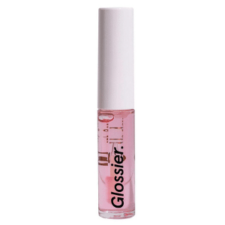Makin’ it Rain, Baby! What most don’t realize is that everything is negotiable. Everything.
Negotiating is Little More than Asking the Right Way
Ok, so apparently I’m weird. I love negotiating deals. Like, I really enjoy it. When it’s almost time to start the negotiating process, I salivate like Pavlov’s dog when the dinner bell rings. Ding! Ding! Pant pant pant!
Learning to negotiate is an imperative LIFE SKILL. It’s not just about business. It’s fine-tuning the art of getting more than what you’re offered, with a compromising spirit.
I spend the most time talking pricing and contract terms with other businesses. Sometimes it’s for Annie Parker & sometimes it’s for my husband’s law firm. In either case, I’m operating as a business – negotiating with another business (called B2B – Business to Business) for either better pricing, better contract terms or both.
Other times, it’s personal! I’m just Shelli-the-person, trying to hammer out a good deal for typical life things like buying a car, appliances or furnishings for the house, services from an electrician or a general contractor if you’re doing a remodel – you know, just basic life stuff!
I’ve saved thousands using these basic negotiating practices
Anyone can do it! Combine basic techniques + the balls to just ask!
Over the years I have conservatively saved tens of thousands, between personal and business expenses, through basic negotiating practices. Amortize that money over a lifetime – and it is substantial. Now, I want to share the basics of it with you!
Let’s start with 3 Fundamental Rules:
RULE #1 – Don’t be intimidated by pricing on fancy brochures
Just because a pricing schedule is printed on an expensive brochure or fancy letterhead, does not mean that it is set in stone. Brochures list top dollar rates to the general public – but “actual rates” are (most always) lower. When a customer asks for a better rate – they simply give their actual price and it looks like you’re getting a deal – because it’s less than the rate in the brochure.
Of course most don’t know this, and will pay the listed rate! Lucky for the business. Knowing this, I most always ask for half of what the printed price states and go from there. Consider initial pricing as nothing more than a starting point to negotiate a better deal!
RULE #2 – Don’t Ask, Don’t Get!
Do NOT be intimidated or afraid to ask. The absolute worst that can happen – is they say is “no.” And if they do, so what? What I have found time and time again, is that by merely asking, you’ll walk away with a better deal than you would have had otherwise. Why? Because it’s human nature to want to compromise, even a little, when asked. Use that to your advantage.
RULE #3 – Think beyond just getting a better price
Think outside of the box. A better deal isn’t always just about price – and truthfully, sometimes price is not negotiable – but other things are. Things like better contract terms, or “extras” that usually come at an additional cost, etc. There is most always flexibility either on the price, the terms of the contract or both…. You just need to ask & hold your ground.

NOW That You Understand the FUNDAMENTALS:
Build upon that knowledge – setting yourself up nicely for the Pricing & Contract Negation stage.
Here are 3 things that I do:
FIRST
Have Pricing & Contract Sent to You
Once I’m serious about purchasing a product or service from a business, I ask the Sales Rep to send me 2 things:
+ A written price quote
I want confirmation of the price plus any additional fees or charges. I never, ever cement a deal based on verbal commitments. Ever. It has nothing to do with trust or bad intentions. People remember things differently or genuinely misunderstand. Be smart – plug the hole.
+ A copy of their Contract for my review
This has all of their T & C’s (Terms and Conditions) outlined. You need to know what you’re getting into, in writing. Not just what they tell you. Same reason as above.
I always want to review their contract and pricing to identify any hidden fees, at my leisure. I’ve caught many discrepancies between what a salesperson verbally told me – and the actual written quote. So just be smart.
SECOND
Tag areas in the contract, you may want to negotiate
+ I read through the contract & tag areas where I may want to negotiate more favorable terms. Businesses write contracts in their favor – duh. You’d do the same, right? That being said, it’s imperative to understand what you’re agreeing to. Once the document is signed – you’re in. There are common areas that I tag for potential negotiation, in most all contracts….
These are 3 Common Contract Areas I Tag:
+ Early termination clause
An early termination clause basically guarantees the business the full monetary value of the contract you sign. For example: Let’s say you sign a 12-month contract for $100 per month. The total contract value would be $1,200 ($100/month x 12 months). 8 months into it, you’re really unhappy with the service and want to break the contract to go with a new provider.
Since you have 4-months left on your 12-month contract, you would be responsible for paying the remaining 4-months at the agreed rate of $100/month or $400 to essentially buy-out your contract. Sometimes there are even additional penalties attached.
+ Auto-renewal
An auto-renewal basically says that unless you give the business “X” number of days cancellation notice, your contract automatically renews and your card is charged, for the same length of the original term.
Example: You have a 1-year contract for a service. At month 11, you decide to switch services to another provider – except you can’t. The contract you signed requires a 45-day cancellation notice, which has passed. Your contract already auto-renewed for another year.
Sometimes auto-renewal is really convenient – and I’m fine with it. Like my yoga studio. Just be aware and decide if it’s something you’re good with or want to negotiate out. If I’m not comfortable with it, I tell them to take it out – and if I’m happy with the service, I’ll have no problem renewing on my own.
+ Pain in the Ass Factor of leaving
Always understand the ease or pain in the ass of parting ways! There’s almost a zero chance that you’ll stay with any given Provider for the rest of your life – so understand what happens when you leave. I learned this the hard way…..
In a nutshell, Oliver’s law firm wanted to change Case Management Software providers (CMS). CMS houses every single client and document associated with the Firm, past and present. You can only imagine the amount of data.
As I was going through the process of changing providers, I wrongfully assumed that we could easily migrate mountains of data in a few large batches, from the old provider to the new. Ummm… NO!?? In short, the contract of our old provider, stated that we were responsible for migrating our data. There was no way to migrate in batches.
In short – I literally had to download & upload every…single….document…. individually. I won’t bore you with the specifics – just learn from my mistake. Be sure you understand what happens if you decide to part ways, and if it’s a pain in the ass – ask to have better terms written in for you. Ugh.

THIRD
I review the Price Quote
Sometimes they include the pricing in the body of the Contract. Other times, it’s separate. Either way, this is where you want to look for added-fees that weren’t discussed in the price of the product or service. Sometimes I’ve found ridiculous “got-cha” fees that are the equivalent of buying a car, then learning that it’s extra if you want a steering wheel!
3 common areas I look to & tag for negotiation include:
1. Installation, Set-Up or Start-Up Fees:
Truth, I call these bullsh*t add-on fees. It’s like buying an airline ticket, then finding that it’s an extra $500 if you actually want a seat. The bottom line: Factoring in added set-up fees is a back-end way for the business to drive up the originally agreed upon price.
I always, always, always get these fees waived or at the very least – greatly reduced. Here’s how.
2. Shipping, delivery, expedite or handling fees
This is another area where most businesses will pad in extra fees. Always ask for these to be waived. Why? Because you’ll likely win either way. A YES = duh, waiving of fees. NO = they’ll usually feel a little bad saying no…..and will now feel compelled to give you something in another area.
3. Pricing options for a Term-Agreement:
Term-Agreements are becoming less and less common. A Term-Agreement is when a business asks you to agree to stay with them for a designated period of time (usually 1, 2 or 3 years) in exchange better pricing. The longer the term you sign, the better the pricing. Pretty basic.
I always start by asking for no contract at all (a month-to-month), for the best-rate quoted (usually the longest term). I know they will decline. By nature, people want to compromise plus the company wants my business.
They usually feel uncomfortable, saying “no,” and will now look for an opportunity to say “yes” to something for me.
Using that to my advantage, I now ask for what I really want: A 1-year term agreement for the (cheaper) 3-year pricing.
Those are the Fundamental basics on which to build. Learn more about Common Sales Tactics used by salespeople and how to overcome them!
Share Comments or Feedback below! Question for Shelli? Just ASK.























